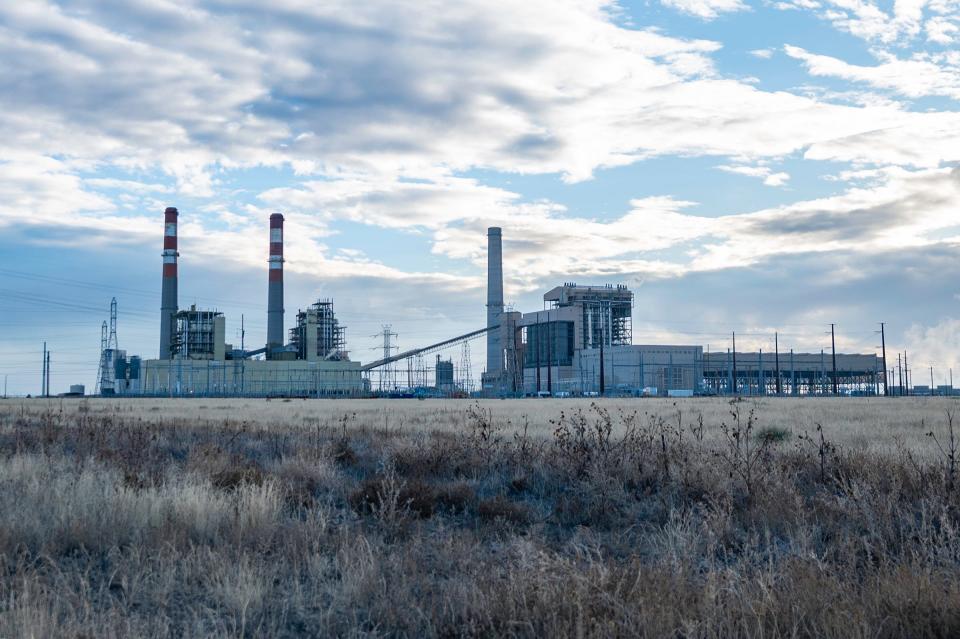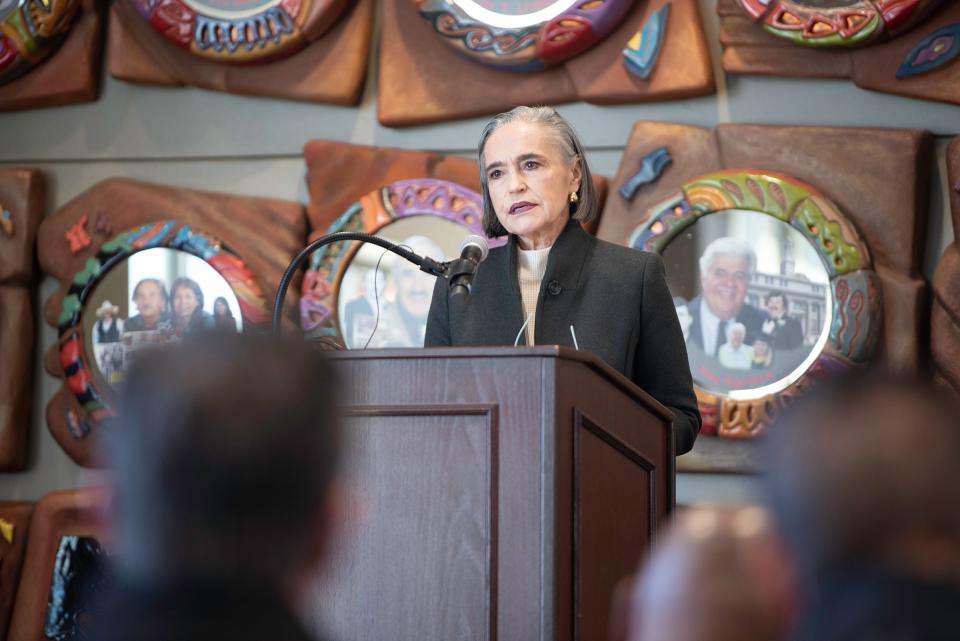Advanced nuclear power is costly and tech is still developing. Is a Pueblo plant realistic?
While a committee of 11 local leaders championed advanced nuclear as the best replacement for the Comanche 3 coal plant earlier this month, others question the feasibility of nuclear in Pueblo.
The Pueblo Innovative Energy Solutions Advisory Committee (PIESAC) concluded that advanced nuclear was the energy replacement most capable of replenishing salaries and tax revenue projected to be lost after Comanche 3 closes in 2031.
Findings from PIESAC's 10-month study of potential replacements found that advanced nuclear would provide between 200 and 300 long-term jobs, pay salaries ranging from $60,000 to $200,000 and provide Pueblo County with $95.29 million in annual property tax payments.

Is advanced nuclear too expensive? Can it be built on time?
Xcel Energy is the primary owner of Comanche 3 through its subsidiary, Public Service Company of Colorado. On July 20, 2023, Xcel Energy leadership team members presented a hypothetical timeline to PIESAC for replacement of Comanche 3 with advanced nuclear.
Regulatory processes, licensing processes, construction and development of small modular nuclear reactor technology could push the start date of an advanced nuclear plant to 2037 or later, according to the timeline.
"Right now what is known of the solutions that we have, if you stack it up, we are much closer to 2040 before a solution like this would be serving our customers," said Kathryn Valdez, carbon-free technology policy director at Xcel Energy, on July 20.
Matthew Gerhart, senior attorney of the Sierra Club Environmental Law Program, told the Chieftain that the lengthy timeline associated with advanced nuclear should rule it out as a potential replacement for Comanche 3.
Gerhart said advanced nuclear is ultimately a "distraction" from considering more feasible and cost-effective energy replacements.
"Not only have a handful of people settled on option, which is not even feasible to be built by 2031, but they've settled on the most expensive option by far."
A draft study by the Colorado Energy Office models scenarios for reaching zero greenhouse gas emissions in the state's electric power sector before 2040. A "cost-optimized" scenario for reaching zero emissions in the study did not select nuclear "due to high costs," according to the study.
The scenario in the Colorado Energy Office's draft study did, however, select several other fuel sources including batteries, biomass, clean hydrogen, demand response, geothermal, solar and wind.
"What they found was that you could reduce emissions and get really close to zero emissions in the utility sector without nuclear," Gerhart said.

'The stars are aligned': PIESAC optimistic about advanced nuclear
PIESAC chair Frances Koncilja disagrees with the notion that advanced nuclear is too expensive and can't be built on time. She told the Chieftain that having a small modular nuclear reactor at the Comanche 3 site by 2030 may be "a bit of a stretch" but 2034 is "possible."
"We all want to decarbonize as soon as possible," Koncilja said. "You need to do that with dispatchable 24/7 generation — it cannot all be solar, wind and batteries."
Due to the rising demands for decarbonization and dispatchable fuel sources, Koncilja predicts incoming incentives, policy, and investments to accelerate the development of nuclear technology. She sees some of these developments already taking shape.
"It is my belief that the stars are aligned because of what's going on in Wyoming," Konciljia said.
TerraPower, a nuclear reactor design company founded by Bill Gates, announced plans to build a Natrium nuclear reactor near Naughton Power Plant in Kemmerer, Wyoming — a coal plant set to retire in 2025. The reactor is scheduled to open between 2028 and 2030, according to Wyoming Public Media.
The U.S. Department of Energy has demonstrated an enthusiasm for the TerraPower reactor by announcing plans to invest almost $2 billion in the project. Earlier this month, the Department of Energy also announced plans to establish domestic supply of Uranium for advanced reactors across the country.
“Nuclear energy currently provides almost half of the nation’s carbon-free power, and it will continue to play a significant part in transitioning to a clean energy future,” U.S. Secretary of Energy Jennifer Granholm said in a Jan. 9 news release.
Support from agencies like the U.S. Department of Energy and investments from companies like TerraPower would likely be a necessity for Pueblo to get its own nuclear reactor as the project will cost several billions of dollars, Koncilja said.
"In order to be at the table to be considered, Pueblo needs to start now — analyzing and seeing what it would involve," she said.
Spring Break 2024: What to know about Spring Break 2024 in Pueblo
Pueblo Chieftain reporter James Bartolo can be reached at JBartolo@gannett.com. Support local news, subscribe to The Pueblo Chieftain at subscribe.chieftain.com.
This article originally appeared on The Pueblo Chieftain: Is advanced nuclear a realistic replacement for Comanche 3 in Pueblo?

